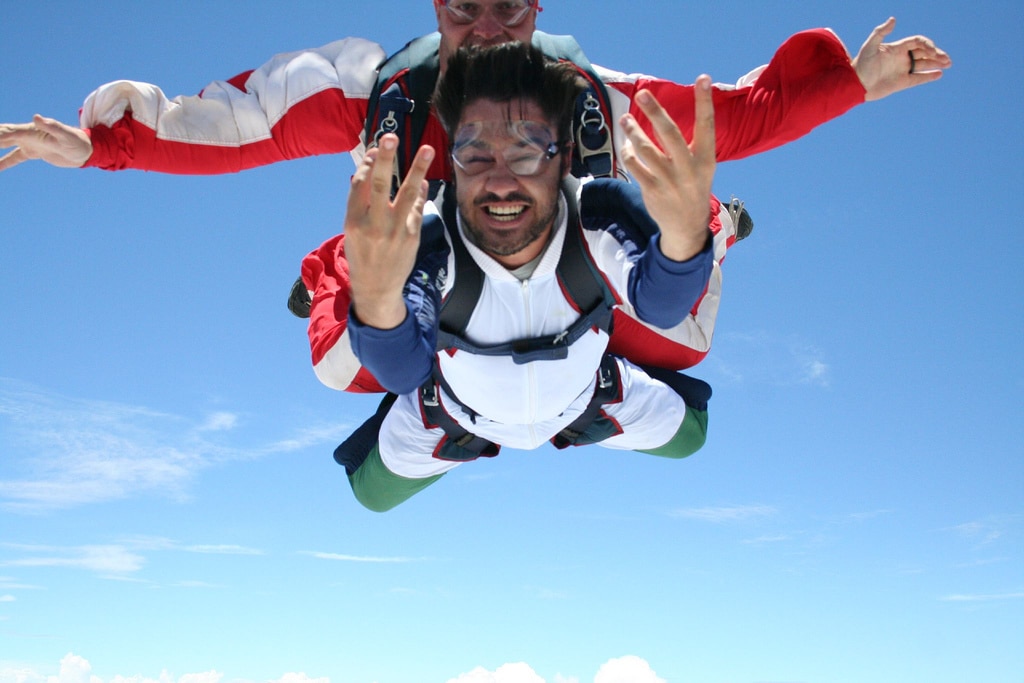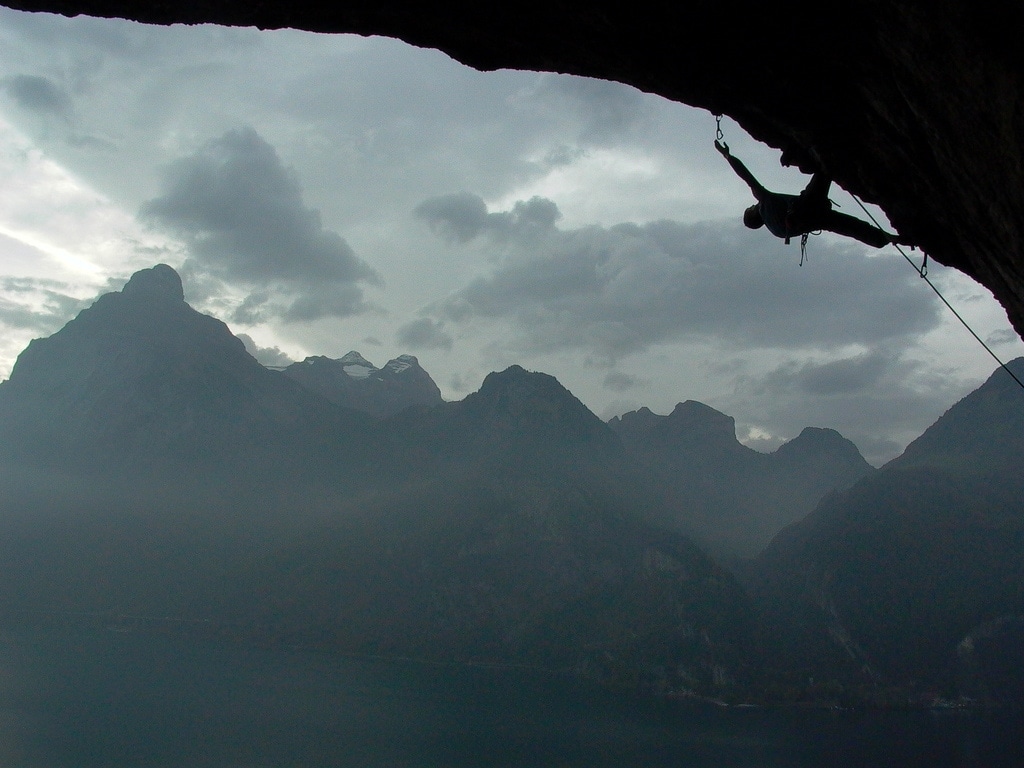The word adventure always has an exciting component that transports us to places that are generally open, very cold, very hot, very humid, very steep, risky and sometimes at great speed. If adventure or extreme sports are not easy to practice or suitable for anyone, as a photographer, they are not easy to photograph either, since they require not only a lot of technical knowledge, but also a lot of knowledge of the sport or extreme activity that we want to photograph.
Surely extreme photographers like both the activity and the photography, but surely they started with the activity and from there the desire to portray it arose. Be that as it may, the first ingredient of extreme photography is knowing the sport we want to photograph in order to do it as safely as possible. For example, I wouldn't recommend anyone photographing a K2 expedition without much prior training ?
A previous knowledge of the sport will not only be safer for your physical integrity, but it will help you to know the best angles to photograph it, the safest places, the best framing and even the best material to do it. It is not the same to photograph some freestyle jumps in the snow than a limestone rock climbing session or a diving session.

NECESSARY MATERIAL
Nobody better than you, if you are a fan of extreme sports, knows what context you will have to face when choosing the necessary material for your photo session. However, we are going to see in a general way, what basic material is recommended to start in extreme sports photography.
CAMERA
DSLRs or SLRs are the classic ones that are recommended thanks to the possibility of controlling them manually, interchanging lenses, adapting an external flash and generally having more accessories.
However, they are not the only option to consider, some EVIL and even some very advanced compacts have nothing to envy to traditional SLRs.
Although the most used are action cameras or GoPro type . Specially designed for this type of sports.
But let's see what to take into account when choosing a camera to photograph extreme sports:
- Body sealed against dust, splashes, etc.
- Resistance to extreme temperatures : You should take this into account if what you are passionate about are sports in the snow or in the desert since cameras often fail under extreme temperatures. The more your camera supports, the better.
- Number of frames per second : Assuming that many extreme sports happen quickly, having a good number of frames per second can make the difference between getting the image and not getting it.
- Weight : It is not the same to be able to install your "tome" on top of a tripod and wait, than having to carry it while you practice climbing, right? ?
- Analog : Yes, don't be scared ? In some cases like very extreme temperatures below freezing, batteries discharge very quickly and screens freeze, so some photographers opt for analog photography to solve this problem. So if you find yourself at -20 degrees and your digital fails, you can try ?

FOCAL
Unlike other sports, extreme sports are almost always practiced outdoors and are often difficult to access for those who want to photograph them, so unless we attend a competition in a closed place, we are going to assume that we will "face ” to those images in the open field.
FIXED OPTICS OR ZOOM?
Unfortunately, not everything is black and white when it comes to deciding whether to choose between a fixed focal length or a zoom. Broadly speaking, the advantages of fixed lenses are their higher image quality and greater luminosity at a much lower price than zoom lenses of equal luminosity. On the contrary, a fixed optic limits us when it comes to moving closer to or moving away from the scene in an agile way, and implies that this movement must be done by us, which is not always possible or easy.
Zoom lenses allow us to instantly zoom in or out of the scene, but they are generally less bright and less sharp lenses.
WHAT FOCAL LENGTH TO CHOOSE?
The choice between an optic with one focal length or another, basically lies in the distance at which it is expected that you can be located to photograph the scene.
-
- Wide Angle: If you can get close enough to the main scene, this lens will allow you to follow the center of interest of your image by including the context in the frame. And thanks to its angle and distortion it will allow you to have very interesting perspectives.
-
- 50mm: If you can move freely around the scene and control the distance, this is a great lens for its sharpness, high brightness, and low weight.
- Telephoto lens: If you plan to photograph the scene from a distance, getting one of these is almost mandatory. Consider a focal length starting at 200mm, as bright as possible, or at least as bright as you can afford, and if possible with a stabilizer if your camera body doesn't have one.

TRIPOD
Surely you have seen in many sports events photographers carry huge tripods to support their huge cameras and their even bigger lenses, right? Well, it's normal, they usually use such long focal lengths to get closer to the scene (soccer matches, athletics, Formula 1, etc.) that they usually need a lot of stability in their equipment.
However, extreme sports are usually carried out in somewhat less ideal settings for carrying a tripod and, as we have mentioned, they usually involve some type of physical effort on our part. If this is your case, the best thing to do is to leave the tripod at home and trust that there is enough light, that your lens is bright enough or that you have a good hand ?
In case you do not need to move too much to photograph the scenes and the weight is not a great inconvenience, do not hesitate to take a good tripod with you , it is better than not missing, especially if you are not going to have to carry it.
An intermediate alternative in weight and performance could be a monopod , which will give you more freedom of movement than a tripod, and more stability than shooting handheld.
EXTERNAL FLASH
In adventure sports, you will find yourself in practically all possible lighting situations: backlighting , low light , high contrast between illuminated and dark areas, etc.
A good external flash that allows you to synchronize it at high speeds when you need it, freeze movement, act as a fill flash or illuminate dark areas, will become your great ally if you know how to take advantage of it. So you can keep the ISO at a level (the higher the ISO, the more noise in the image) and get sharp and perfectly exposed images.
BACKPACK
A good backpack that protects your equipment and your back well is essential if you want to go out and photograph adventure sports. Try to make it waterproof, light, with a compartment for everything, and practical when it comes to accessing its compartments.

LEASH AND/OR HARNESSES
If you are going to spend the day photographing, the ideal is to do it in the most comfortable and safe way possible. Therefore, it is important that you take care of all the details of your equipment, including which strap is most comfortable and best suits your photographic style.
If what you need is to have as free your arms as possible, there are harnessesfor reflex cameras that can be very useful in certain situations.
BATTERIES AND EXTRA MEMORY CARDS
If you shoot in bursts to try and capture that defining moment, you could quickly run out of battery and/or memory card space , so under no circumstances forget to add any extra batteries and memory cards you anticipate you'll need.
ACCESSORIES
Each sport has its particularities, so we can never generalize when choosing the necessary material to carry it out. Many times you will have to start from a base and add or subtract depending on your style of photography, and on a trial-error basis. However, there are many specialized photographic accessories , from waterproof cases and specialized flashes for underwater photography, waterproof covers for water sports or rainy days, etc.
There are also other types of cameras designed for extreme sports photography such as GoPro, which with its wide-angle optics, its small size, its waterproof case and its many accessories (adaptable to the helmet, to harnesses, tripods, etc.) becomes the classic for action photographers.
And although GoPro is by far the best known, there are other alternatives of different qualities and prices: Polaroid Cube, Sj4000, or Rollei actioncam, etc. At the moment they do not have the quality of an SLR camera, but they are practical, they do not weigh anything, and they can give you very interesting images thanks to their angular optics and the points of view that you can obtain with them. Of course, you will not be able to control practically anything in terms of settings.
If you are one of those who enjoys the outdoors practicing or watching some type of mountain or sea sport, you have a camera, and you have never taken it with you, perhaps the time has come for you to dare to do so, don't you think? What could be better than combining two passions at the same moment? ?
I hope you have found it useful. If so, share it with another adrenaline junkie, they will surely appreciate it ? Thank you very much!


